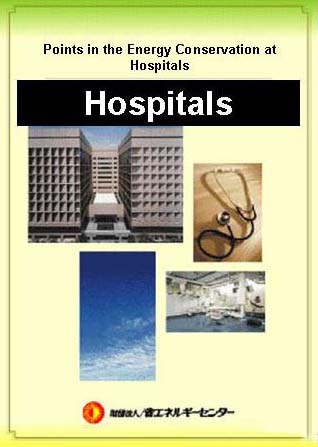Points in the Energy Conservation at Hospitals

| AEEC Home | Training Index | Index | Top | Previous | Next |
| ECCJ / Trainig Text | Vietnam |
Points in the Energy Conservation at Hospitals
|
 |
2. Differences from Other Business Categories in Terms of the Consumption of Energy |
|
A large amount of energy is used in a hospital
In particular, the amount of the consumption of heat is large since much steam and hot water is used
Source: The Energy Conservation Center Fiscal 2003 Investigation of the Status of Energy Use by Buildings |
Characteristics of the Department Composition and Consumption of Energy |
||||||||||||||||||||||||||||||||||||||||
|
| 12/13 Next |
| AEEC Home | Training Index | Index | Top | Previous | Next |
| Copyright(C) ECCJ 1996-2019 |